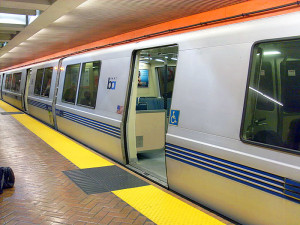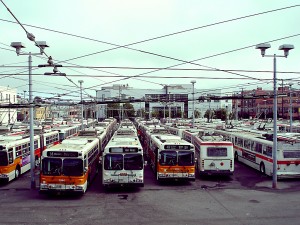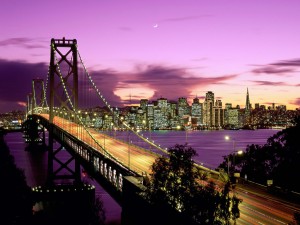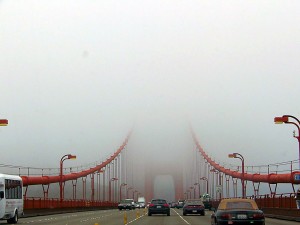 Well it’s going to be an interesting next five days in San Francisco. Not since the 1989 quake has the Bay Bridge been closed for this long. The new bridge is in its finishing stages over the next few days and here’s what it’s like if you’re going to be driving around.
Well it’s going to be an interesting next five days in San Francisco. Not since the 1989 quake has the Bay Bridge been closed for this long. The new bridge is in its finishing stages over the next few days and here’s what it’s like if you’re going to be driving around.
Traffic in the city was pretty light during rush hour this morning. I have to say that driving down Montgomery Street between 8-9am was pretty easy and stress free since apparently there were a lot of people driving into the City from the East Bay who are stuck with Bart or the ferries now. I’ve heard people say that Labor Day weekend isn’t a big weekend for people coming to the City or people leaving the City, but from what I saw today it was practically down right empty.
I gave a ride to someone in the Sunset District this morning who had to go down to Battery Street. This normally would take me a half hour, but today I was dropping him off in 15-20 minutes. Even he was surprised at how fast we got there. There really wasn’t anyone out there on Franklin, Van Ness, Broadway, Gough, Fell or Oak…it was actually a very nice relaxed drive.
If you’re going to be driving around San Francisco over the next few days there’s a few things to keep in mind:
- The Bridge is closed so they’ve cut back on I-80’s lanes. I’d actually try and avoid the freeway unless necessary.
- Oak Street is pretty empty. Since the Bridge is closed there’s not much reason for most people to get on the freeway so traffic was light.
- Franklin & Gough. Two more streets that feed people to and from the bridge. Pretty open generally.
- Bush Street. Ghost town practically. This is a main feeder street for people trying to get downtown from the Richmond.
- Treasure Island. You have to get on at 1st and Harrison. That’s the only way to get there, if you really need to go.
Oddly enough places that don’t have much to do with the Bridge [i.e. the Sunset & Richmond districts] were pretty quiet as well except around the shopping areas which were pretty much busy as always. You can add to this a big warm wet hug from @KarlTheFog with temperatures in the 70’s-80’s and humidity in the 80’s-90’s keeping everyone out here, well, moist. It’s kind of like Hawaii for people who don’t like sun too much. Enjoy!











